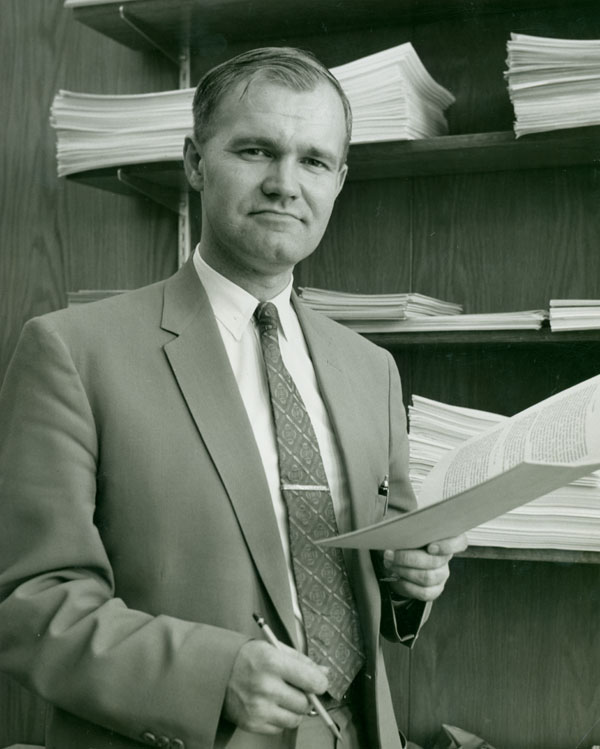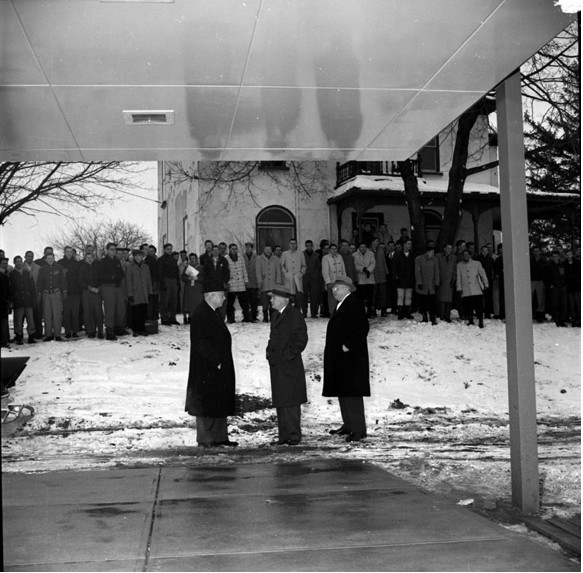Chronology - 1950s
1957
The Waterloo College Associate Faculties, which in 1959 became the University of Waterloo, received its first students in July, 1957. In October of that year, the first group of Co-op engineering students embarked upon their initial work terms. The alternating work-study program at Waterloo profoundly influenced the character of the University of Waterloo as well as its computing programs which early on acquired a practical application in the creation of software.
The successful launch by the Soviet Union of its Sputnik I on October 4, 1957 caused a dramatic shift in emphasis toward science and engineering. In the inevitable space and technological race that followed, the development of computing and computer applications would take a prominent place and within this field the new University of Waterloo would establish an extraordinary reputation. International political developments, the expanding Canadian economy, the rise of computing, the need for more trained industry professionals, and the introduction of Co-op education helped to ensure that UW would begin its existence as a school with a strong technical and scientific focus, while its Arts and Science faculties grew quickly in order to meet the need for teachers in Ontario's rapidly growing school system.
IBM invented the first disk with memory, and the first FORTRAN compiler was developed for the IBM 704. These events were crucial to computing at Waterloo as Waterloo's creation of the unique WATFOR compilers brought an international reputation to the fledgling institution.


Stanton joined the faculty of Waterloo College as Head of its Mathematics Department. Stanton was intrigued by the idea of starting a new university and he had a profound effect on Waterloo's growth, including the creation of its Faculty of Mathematics in 1967.


The University of Waterloo began as the Waterloo College Associate Faculties in 1957. By 1958 construction had begun on the land adjacent to the Schweitzer Farmhouse (shown above). The farmhouse was used briefly for faculty offices, including Stanton's; today it serves as UW's Grad House. This photo, which still captures the ambience of a 19th century Ontario farm house, is of a more recent time; visible in the background is the Dana Porter Library. (
<< Previous (1950) || Next (1959) >>

